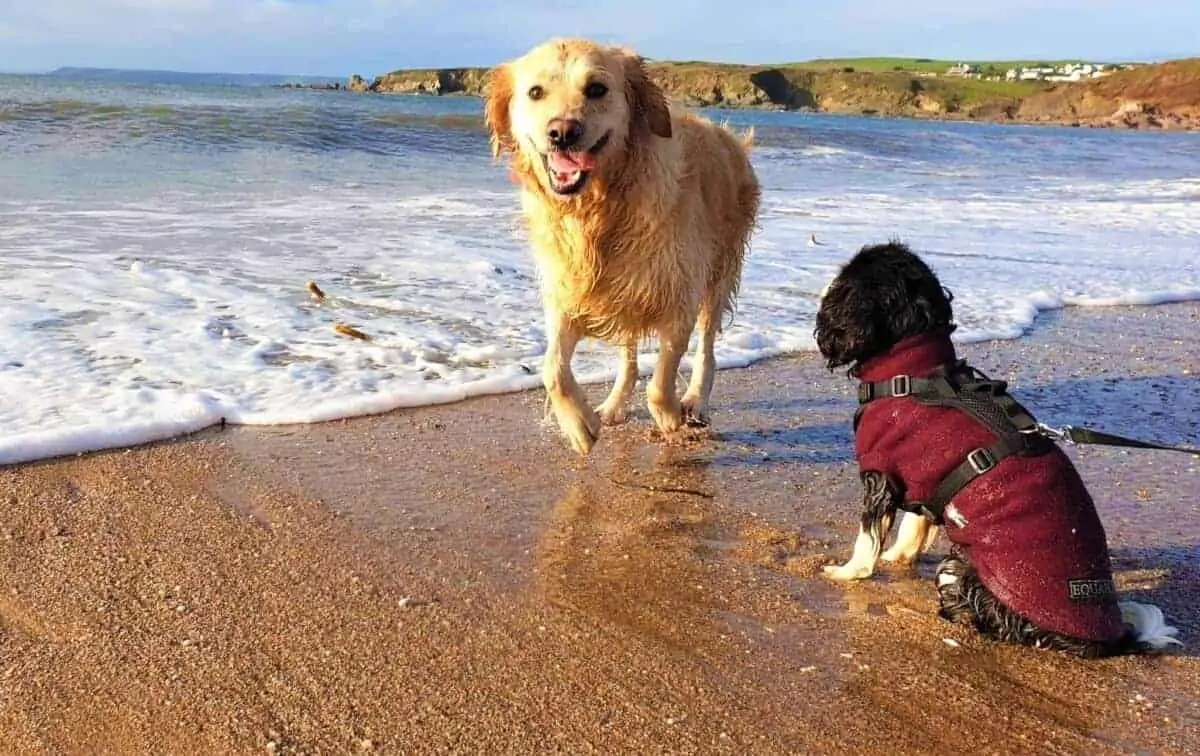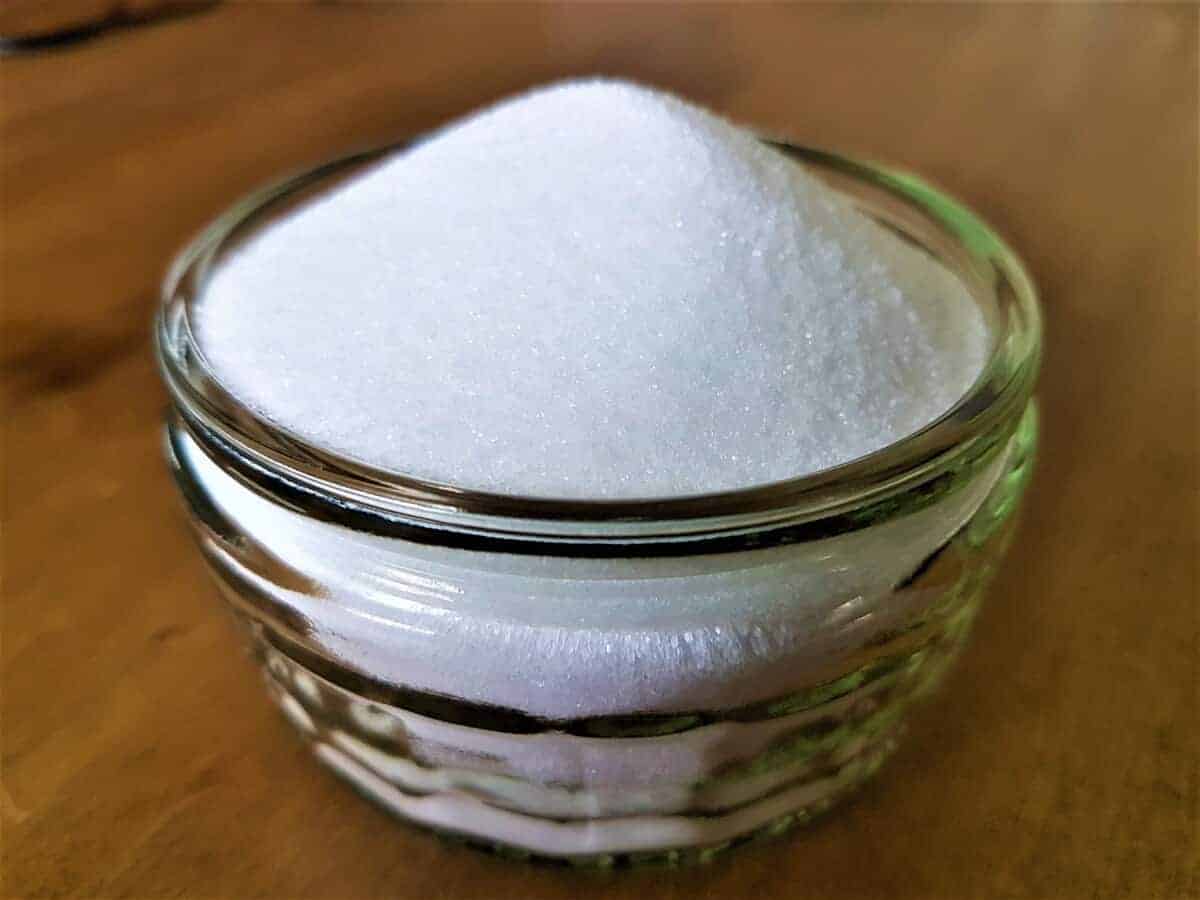Most are aware that a decent amount of salt is necessary for electrolyte balance in one’s diet. Not only that, but diving into a bag of salty potato chips feels like two steps away from heaven itself. But is the same true for your dog? Do dogs need salt, and if so, how much is enough? How much is too much?
A healthy daily amount of salt ranges between 0.26 to 1.5 grams per 100 grams of food. The amount can differ depending on your dog’s weight, age, or health. Most high-quality commercial dog foods should contain a balanced amount of nutrients to sustain a healthy dog.
As a pet owner, you want the best for your furry friend. That’s why it is important to know all of the information in regards to his health. If you’ve been wondering about your dog’s nutrition and are concerned about salt intake, keep reading. This blog will teach you why dogs need salt, how much is the right amount, and how to monitor for signs of heavy salt intake.
Contents
Do Dogs Need Salt
Yes, dogs need salt. There are various reasons why enough salt is essential to their well-being. Some of these reasons include:
- Proper cell function
- Fluid balance
- Acid-base balance
- Nerve signal transmission
- Stomach hydrochloric acid production
- Aids digestion
Do Dogs Need Salt In Homemade Food
Most of the time your dog should be getting enough salt from their store-bought kibble. Popular dog foods are made so that a balanced diet can be had within a convenient biscuit kibble. However, some owners would prefer not to use commercial dog food options, which is fair enough, after all, most of us are unaware of the process and ingredients used in producing even the best brands of dog food.
Homemade dog foods are of course more expensive and take extra time to produce, considering you have to not only go to the store to buy the ingredients and then make it up yourself. It’s important to also remember that you may not be able to store your homemade dog food for as long as commercial, but that may be due to preservatives that are put into commercial foods.
The most important aspect of making your own dog food is to ensure that you are providing your dog with a balanced array of nutrients and minerals. Salt is an important aspect of many foods even for us, whether it is the taste or the fact we need it to live a healthy life. A healthy daily amount of salt ranges between 0.26 to 1.5 grams per 100 grams of food, however, this will depend on your dog’s weight and health at the time. When making your own dog food at home it’s important to realize that many natural vegetables and meats contain high levels of salt, so in many ways, you may not need to put any added salt into your homemade food. A great resource recommended by the AKC, to estimate the nutritional content of homemade dog food is BalanceIT, which is run by veterinary nutritionists. One of the best options is to ask your local Vet, who will know your dog’s breed, weight, health status and so can determine better than any what ingredients should be included in homemade foods specifically for them.
How Much Salt Do Dogs Need
Dogs need a decent amount of salt in their diet. The key is to know how much is the right amount. Most dogs can consume up to 1.5 grams per pound of body weight, but anything more than this can be lethal.
Does that mean you should strive to hit that number? Absolutely not. 1.5 grams is the limit, not the target. That said, as little as 0.25 grams per pound of body weight is enough to keep your dog healthy and satisfied.
If you’re unsure about the correct number of salt for your hound, the best thing to do is to ask your veterinarian. They will have the exact numbers for your dog. This is imperative as each dog is different, and the amount of salt they can have will vary, especially according to their size and weight.
Signs a Dog Has Had Too Much Salt
Just as a human should not consume an overabundance of salt, neither should your dog. The good news is, salt poisoning is fairly rare and won’t typically occur from eating the right amount of dog food per day. It’s more likely for salt poisoning to happen if the dog is overfed or gets its hands on a human product with plenty of salt.
As an example, my golden retriever loves to play in the sea. When we take him to the beach he is in and out for ages, unfortunately, he does consume some seawater whilst playing around. I keep fresh water in the car so he can have a drink of fresh water after playing in the sea. Often he will drink the entire bowl of freshwater, simply because his body is regulating the intake of salt.
Although saltwater swimming pools are often less salty than the sea it is also important to stay vigilant, especially if you and your pooch are swimming for long periods of time. This prolonged exposure not only increases the risk of consumption but can also damage your dog’s fur and skin. Make sure you wash your dog properly after swimming in any saltwater environment. Check out this article for more information on swimming in saltwater. “Can My Dog Swim In A Salt Water Pool”.

In any event, it is important to know the signs that your dog has consumed too much salt. This way, you can act fast. Here are some of the common symptoms associated with salt poisoning:
- Consuming an excessive amount of water (more than usual)
- Appearing tired and groggy
- Swollen stomach
- Muscles become stiff
- Vomiting
- Diarrhea
- Lethargy
- Excessive urination
- Tremors
- Seizures
- Eventually, coma or death can occur
What To Do If Your Dog Consumed Too Much Salt
If you believe that your dog has consumed an excessive amount of salt, it is important to seek medical treatment right away. The first thing you should do is call your veterinarian. Explain to them the situation. You will need to know how much salt your dog has consumed as well as your dog’s body weight and size.
If the veterinarian determines that your dog should be looked at, you will need to bring them in for treatment right away. According to WagWalking the veterinarian will need to go through a process to bring your pup back to health.
Physical Examination
The first step is the physical examination. Here, the veterinarian will check the following:
- Reflexes
- Temperature
- Pulse rate
- Weight
- Height
- Blood pressure
- Respirations
- Hearing
- Vision
Tests
A variety of testing will also need to take place. The veterinarian will test the complete blood count, gases, and chemistry. They will also perform a urinalysis to understand better how much sodium is in the system.
A cardiac diagnostic must also take place. During this process, an EKG (electrocardiogram) will be performed to check your dog’s heart. Some other diagnostics, like x-rays, MRI, CT scans, and ultrasounds, may also occur. These tests will check for any signs of damage to your hound’s brain, heart, and lungs.
Treatment
If the veterinarian has discovered that treatment must bring your dog back to health, it will likely start with an IV containing fluid. They may also be administered oxygen and electrolytes.
With severe cases, your dog will likely need to be left in the hospital for three days. That’s because salt levels must be brought down slowly and steadily to avoid any adverse effects. If all is well after three days, the dog can be removed from the IV, oxygen, and electrolyte treatment and monitored for 24 more hours.
Can Dogs Have a Salt Deficiency
Salt poisoning isn’t the only concern when it comes to your dog’s relationship with salt. Pet owners should also look out for signs and symptoms of salt deficiency too. Salt deficiency can be extremely negative to your dog’s health as the cells begin to swell, leading to neurological problems.
Causes of Salt Deficiency in Dogs
There are a few causes of salt deficiency in dogs, including:
- Burns on the body
- Excessive, prolonged diarrhea and/or vomiting
- Excessive urination (commonly caused by a side effect to medications)
- Heart failure
- Excessive sweating
- Pancreatitis
- Abnormal glucose levels
- Renal failure
- Fluid accumulation
Symptoms of Sodium Deficiency in Dogs
Salt deficiency can be a bit more challenging to decipher from salt poisoning. This is because salt deficiency leads to swelling of the cells and neurological symptoms, challenging to recognize without experience. However, some of the signs that may come from a salt deficiency include:
- Lethargy
- Seizures
- Vomiting
- Disorientation
- Loss of appetite
If you think a sodium deficiency is causing your dog to behave oddly and any of these symptoms are attached, call your veterinarian right away. An examination is necessary to decide if your dog needs help with a sodium deficiency problem.
Which Foods Are Too Salty For Dogs
Feeding your dog the recommended amount of dog food for their size and weight is the best and easiest way to make sure they get the right amount of sodium intake per day. However, most dog owners enjoy feeding their dog people food from time to time.
Knowing that excess salt can lead to very harmful symptoms, it’s important to know which foods should not be shared with your hound.
Some of the common foods that are off-limits due to excessive salt include chips, biscuits, processed meats (sausage, deli meat, burgers), and cheese.
Should I Put Salt in My Dog’s Water
There is never a reason to add salt to your dog’s water bowl. In fact, ingesting salt water can lead to water being drawn from the blood, ultimately causing diarrhea, vomiting, and dehydration. You can avoid this by simply offering your dog fresh, pure, and filtered water and sticking to regular amounts of dog food.
Conclusion
Dogs need salt, but too much or too little can lead to various problems, even death. The best way to avoid salt poisoning is to feed your dog the recommended amount of dog food per day and avoid salty foods like chips and deli meat. If you’re concerned that your dog is suffering from salt poisoning or a salt deficiency, a visit to the veterinarian is necessary.

